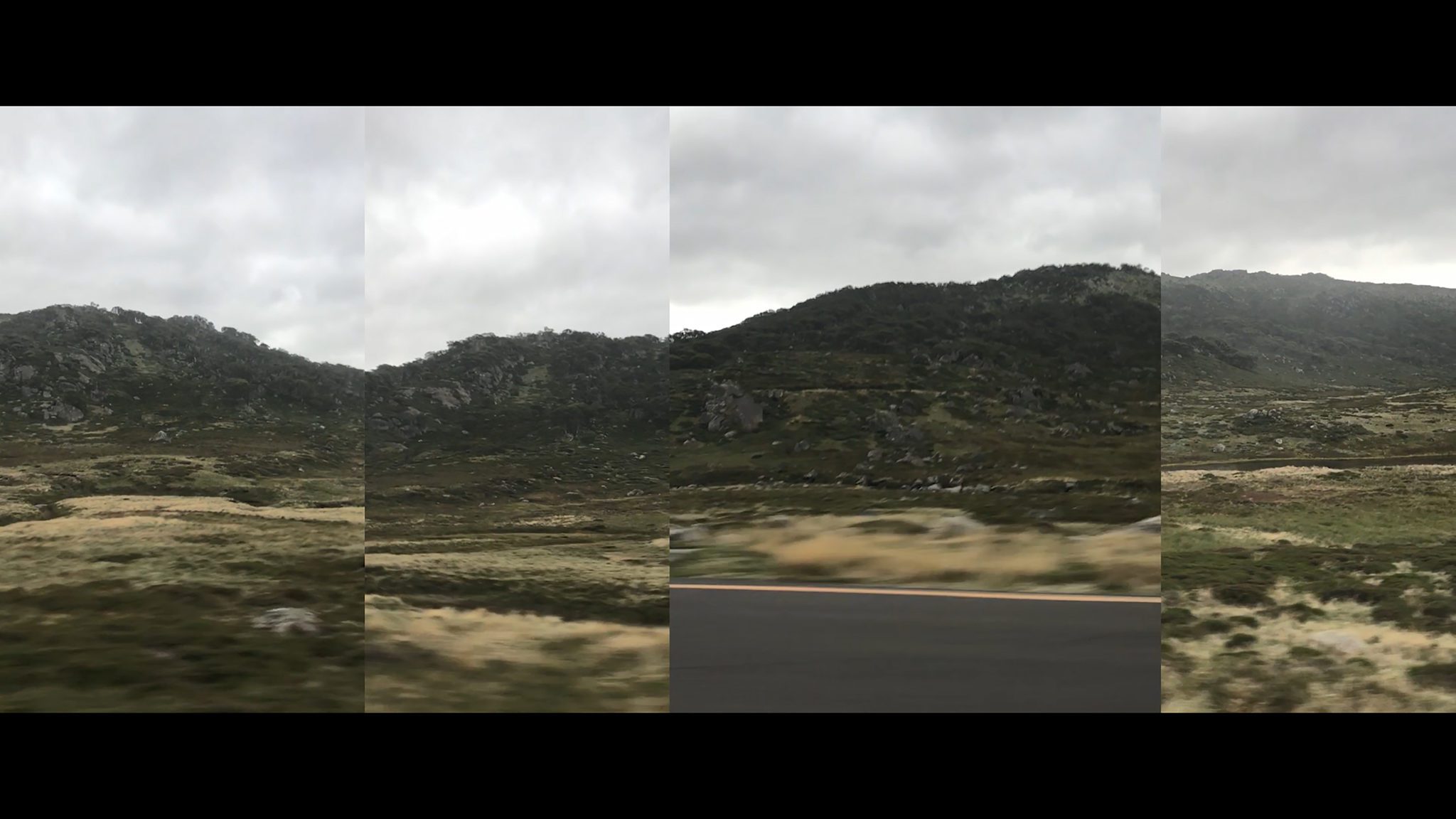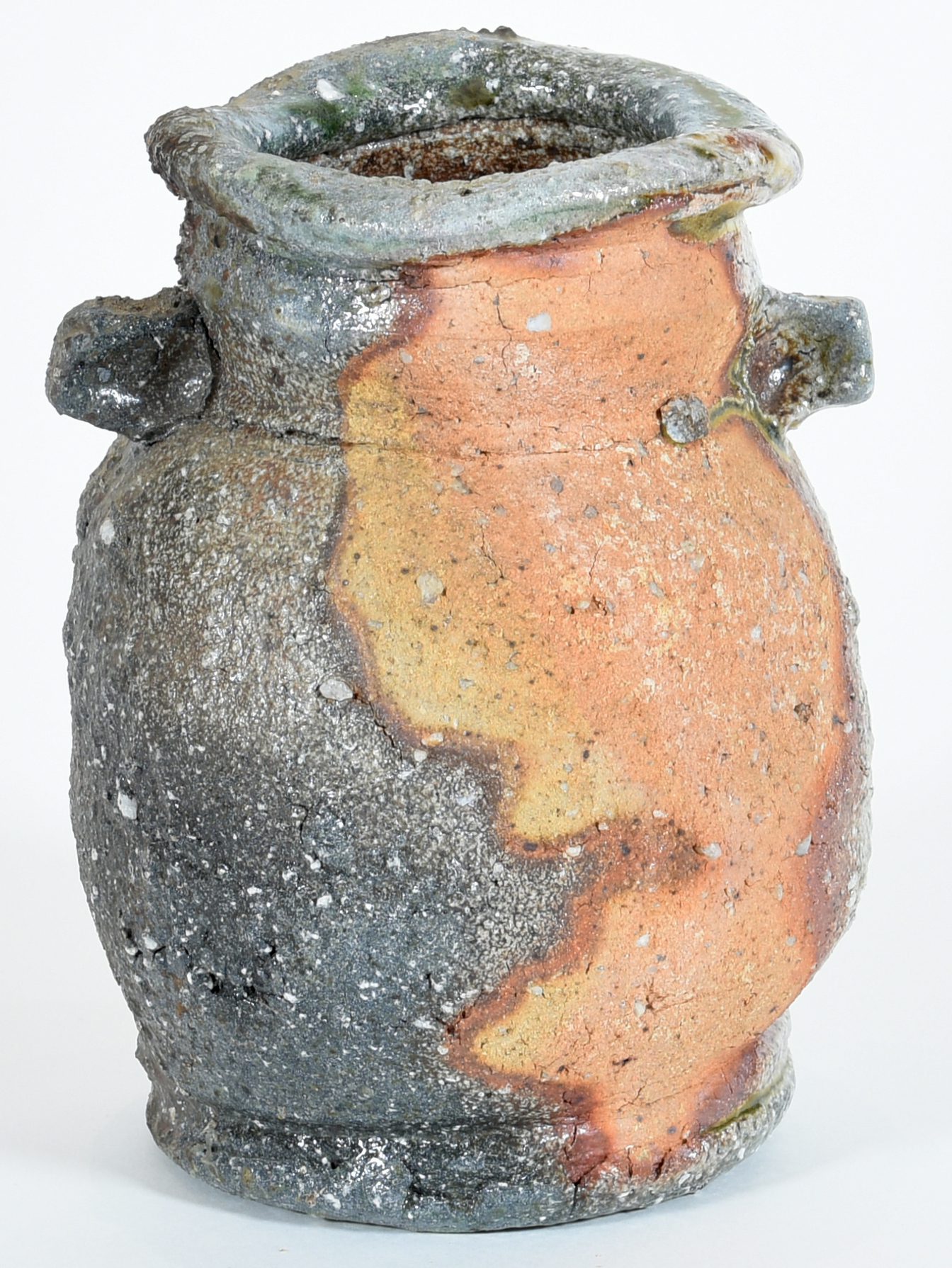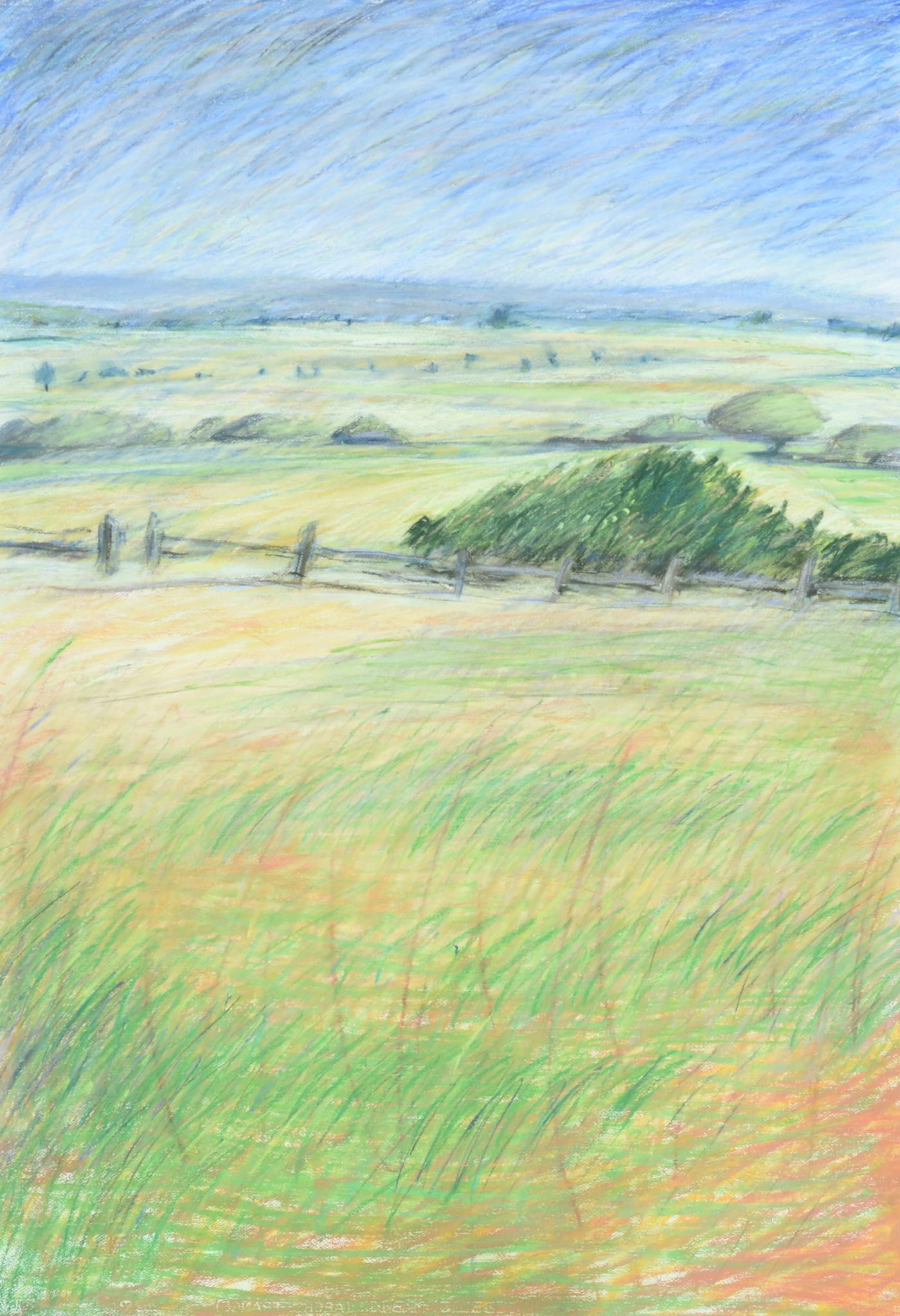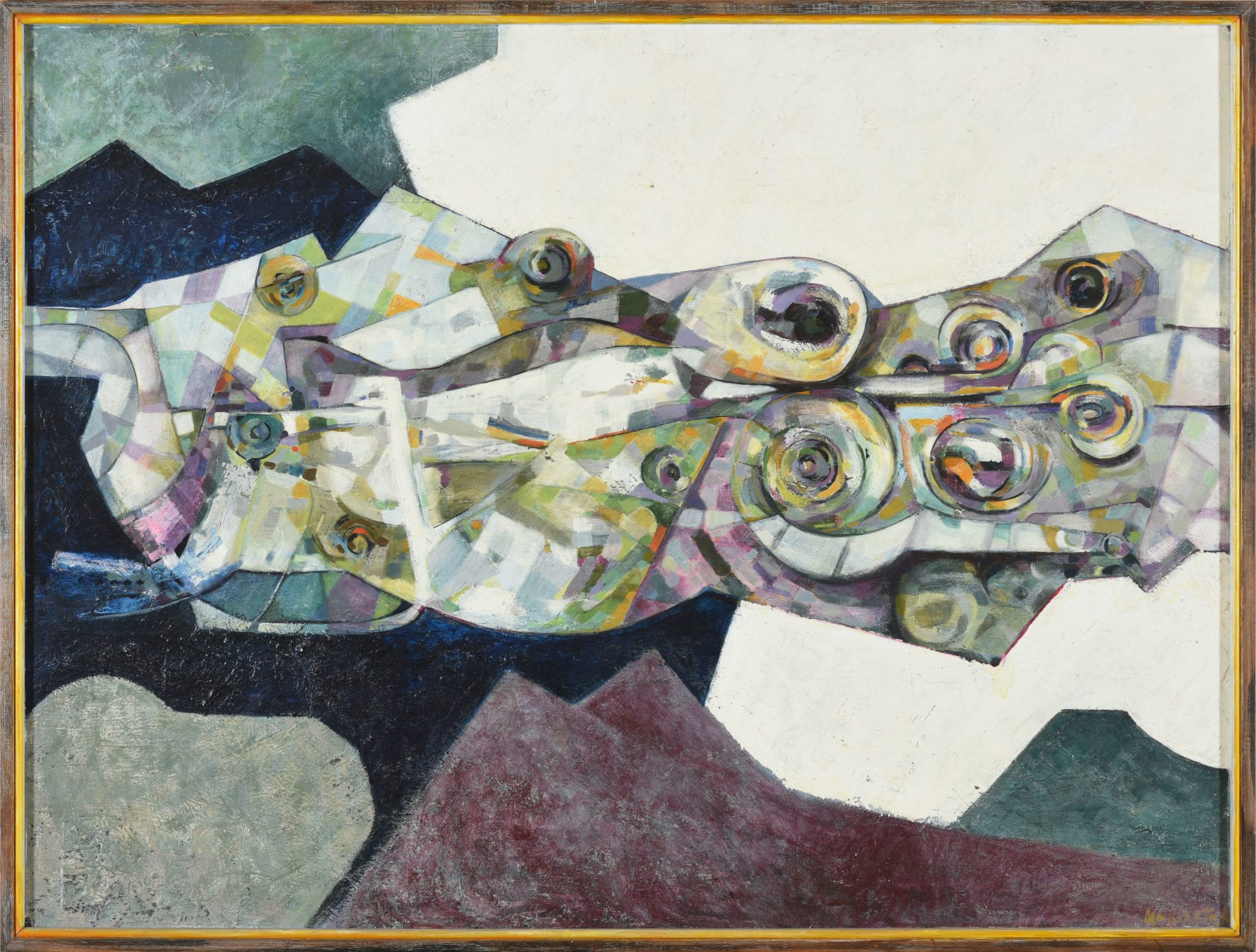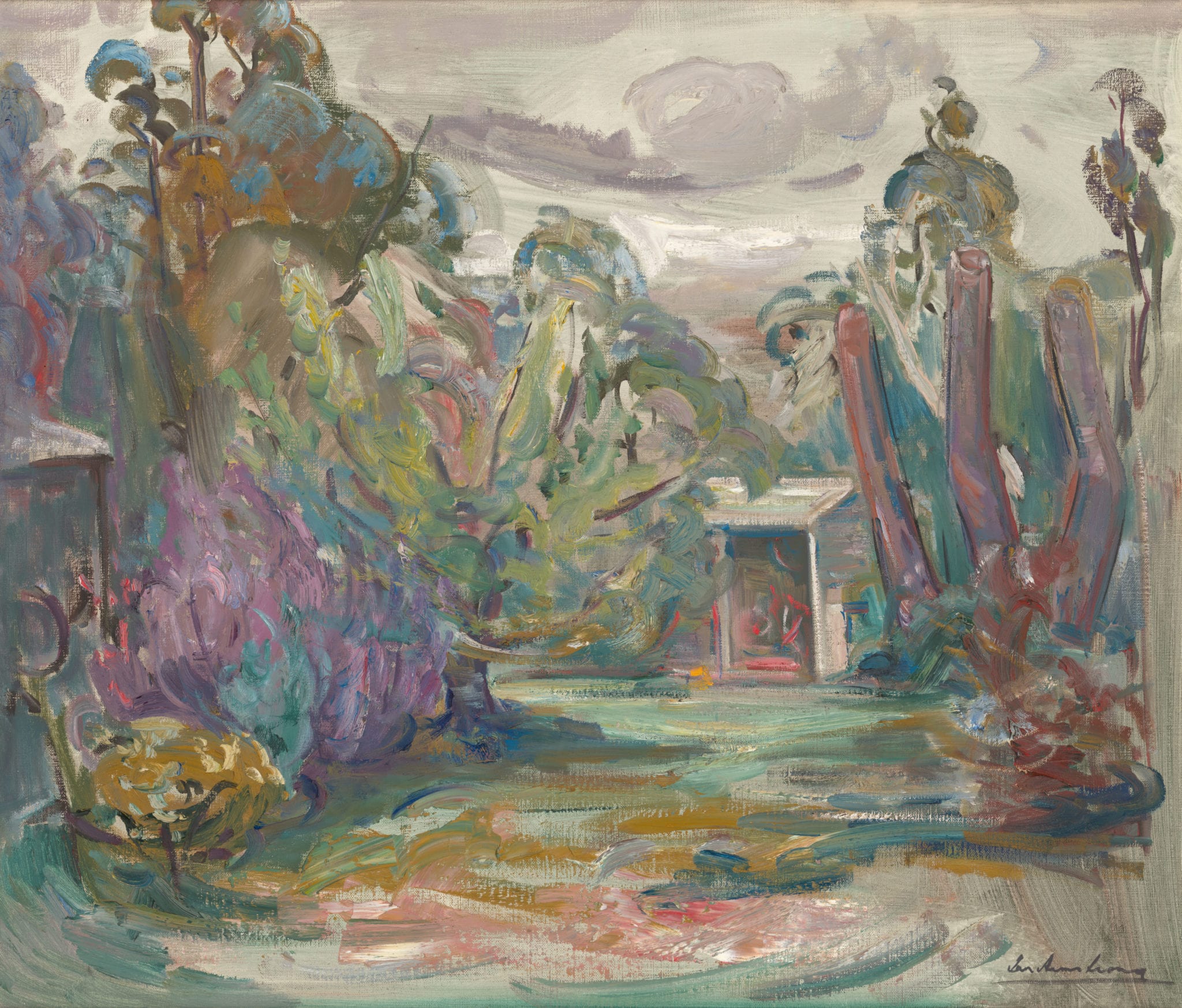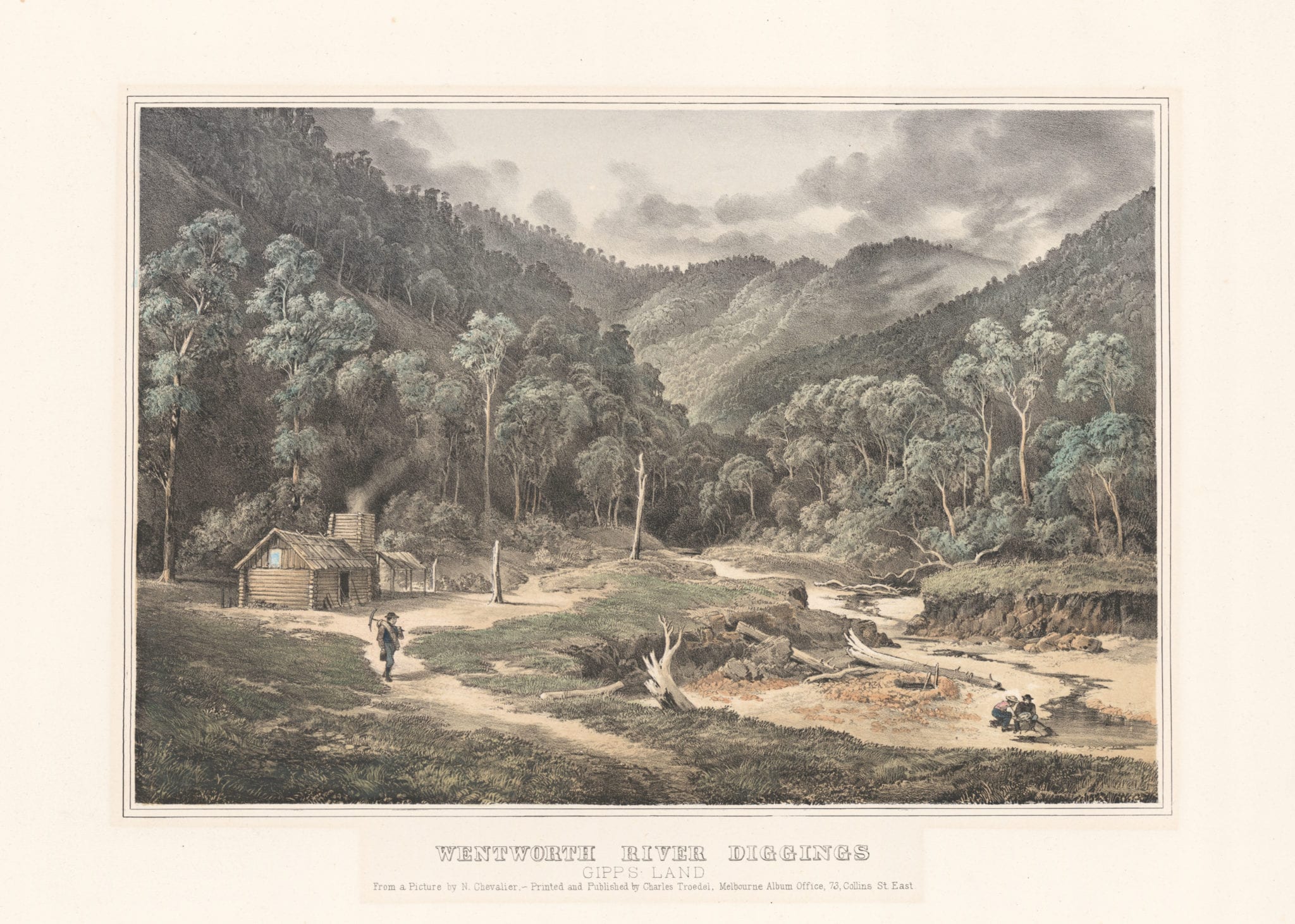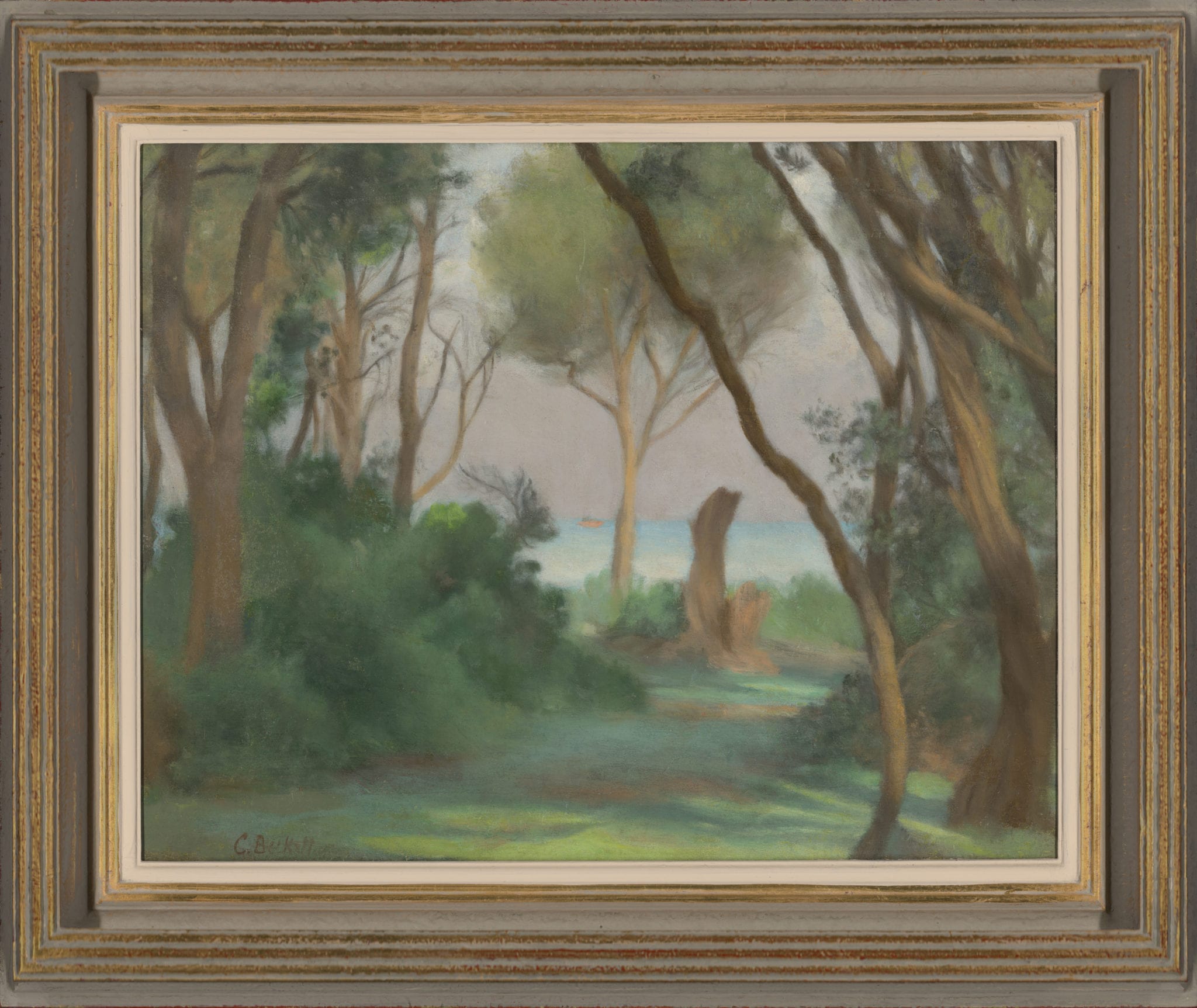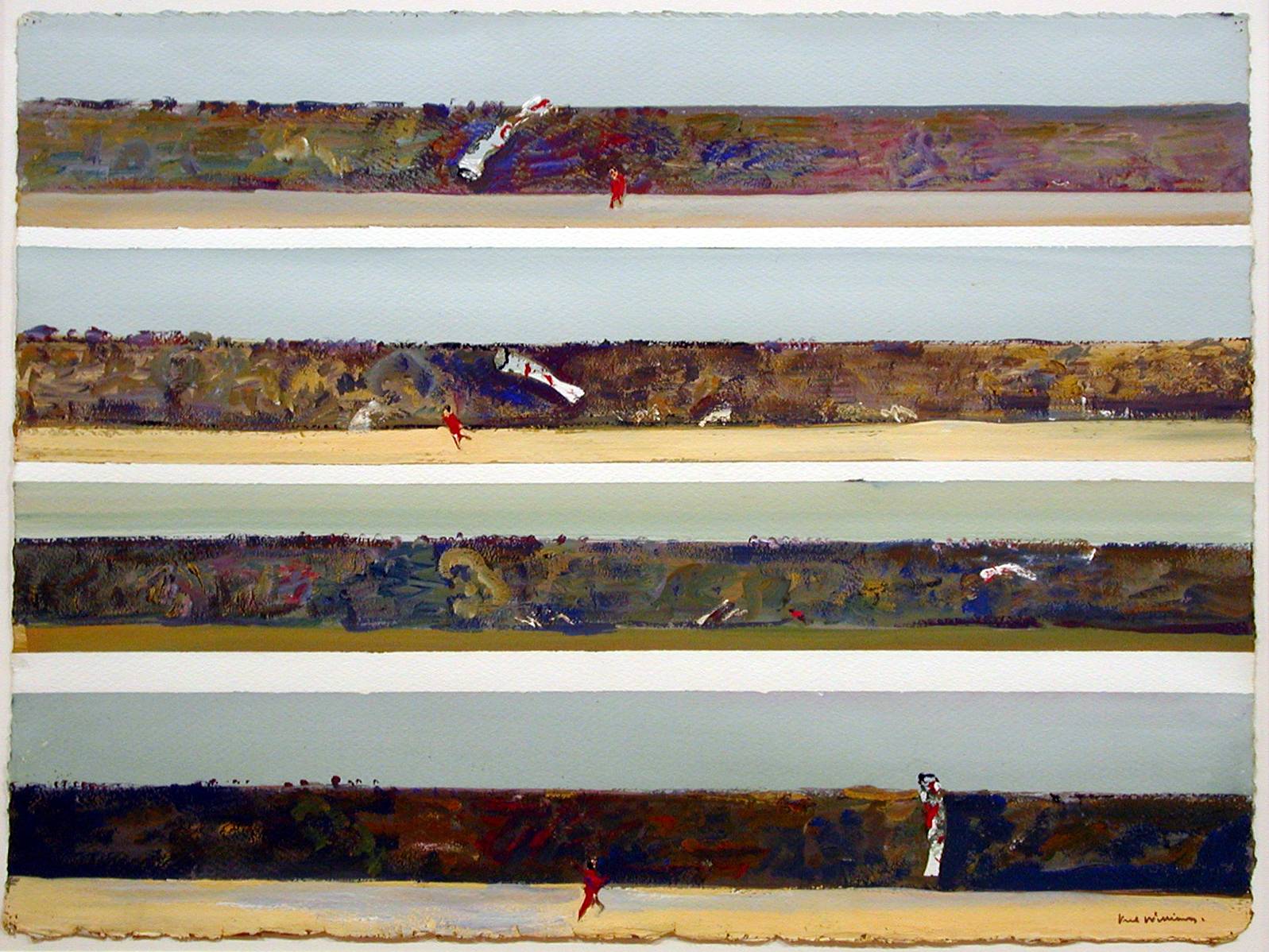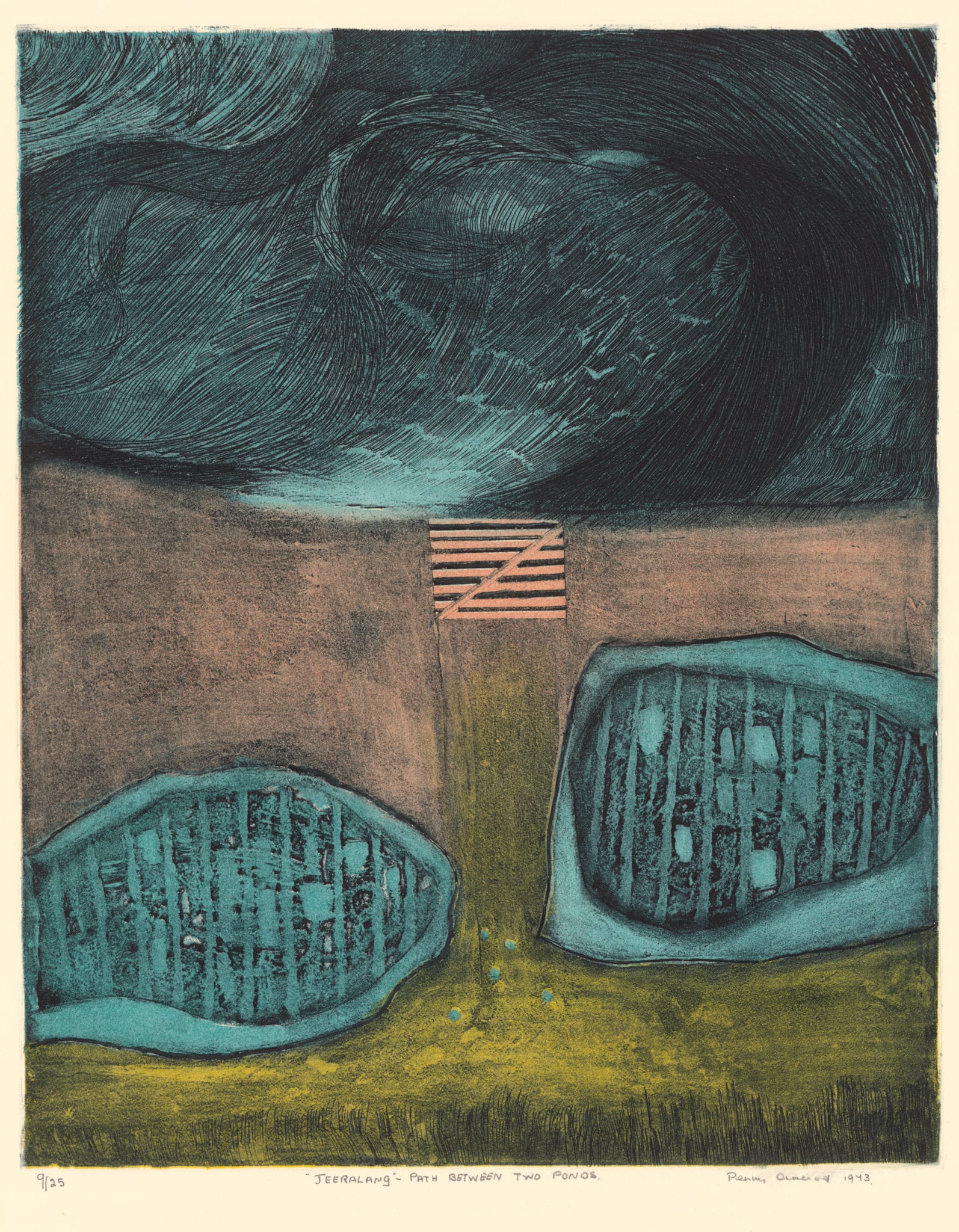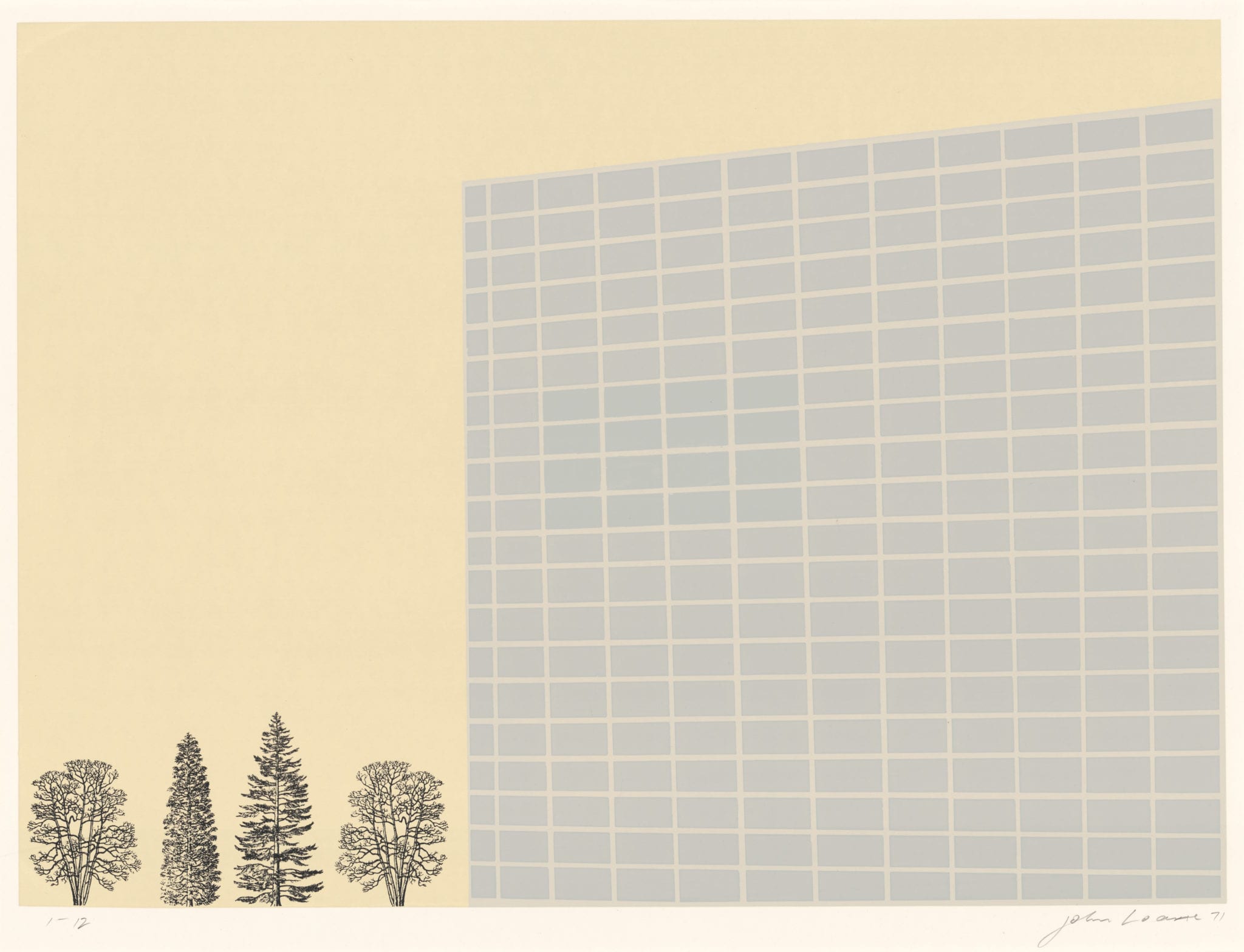LRG COLLECTION: THE LAND
We stand upon, we build homes and buildings upon it, we dig and we farm it. The land is literally under our feet. The depiction of land in art is generally referred to as ‘landscape’. Some artists try and deal with nature and the land as it appears, others search and play to understand what the land is. Here are a number of examples of artworks in Latrobe Regional Gallery’s collection that explore ‘land’.
Steaphan Paton
My Jindabyne II, 2018,
Single channel digital video, colour, silent, Ed 3/3,
Latrobe Regional Gallery Collection, purchased 2021.
My Jindabyne II 2018 presents a silent landscape. It is a landscape the artist has stitched together with multiple videos taken from a car to show the undulating mountains, and valleys of south-east New South Wales. There is immutable character and significance to this location as the artist’s Country, Monero inherited from his father. As a result, the landscape becomes fluid – coexistent, contrasting Indigenous and colonial perspectives.
The video keeps showing the same portion of the countryside. The cuts, the slices are visible and emphasise the construction of the landscape. The artist describes this view of the landscape as being like a 4th-dimensional view. The artist may mean that the video seeks to encompass physical, spiritual, and social realms—all within a 30-second looping video.
Steaphan Paton lives in Churchill, in his mother’s Kurnai Country.
The artist and work are included in 50 Years: 50 Artists exhibition.
Owen Rye
Vase 7, 1995,
Wood fired ceramic and ash, 19 x 14 x 14 cm,
Latrobe Regional Gallery Collection, purchased 2019.
Living and working in Boolarra South, the rural bushland environment provides constant fuel for Owen Rye’s process in using a wood-fired anagama kiln. This type of kiln originates from ancient pottery from the 5th century, first used in Korea before Japan and China.
The surface appearance of the final work is affected depending on the placement of the ceramic in the kiln. An ash glaze is created wherein some parts, the embers coat the piece.
The variation produced throughout the surface of the work is particularly evident in Vase 7, where the ash deposit creates an encrusted texture, as though having accumulated fossilised remnants of earth. The artist’s interest in archaeology becomes an apparent reference in this piece, speaking to historical processes, the evolution and the correlation between lifestyles and human practices over thousands of years.
The artist and work are included in 50 Years: 50 Artists exhibition.
Julie Rosewarne Foster
View to the South, 1985,
Pastel on paper,
106 x 73 cm,
Latrobe Regional Gallery Collection, purchased with the assistance of the Australia Council, 1986.
Julie Rosewarne Foster lives in Gippsland, where she has been an important part of the local arts scene both as an artist and through her roles in arts education.
Like many artists who lived or travelled to the region, Julie Rosewarne Foster was drawn to the forests, cleared paddocks, rich soils and good rainfall. View to the South is part of a series of pastel drawings that reflect on these landscapes as the artist travelled from place to place. She often made these drawings en plein air, and this work would have been a quick drawing done on-site from her period in Traralgon South.
The artist and work are included in 50 Years: 50 Artists exhibition.
Margaret McMaster
Voyage, nd
Synthetic polymer on board
91 x 122 cm
Latrobe Regional Gallery Collection
Voyage is an artwork that merges abstraction and the landscape genre. The motif running through the centre of the composition could be either waves of water or clouds tumbling through the sky. The key circular elements are a little reminiscent of the colours and forms that were employed by Australian painter Leonard French. There is a contrast between the dark angular forms at the bottom of the artwork with the more curved, organic forms that form the centre plane of the painting. This painting was acquired in the first year of the Latrobe Regional Gallery’s acquisition program.
Ian Armstrong
The Garden, nd
Oil on canvas
76 x 92 cm
Latrobe Regional Gallery Collection
The painting The Garden won the Roland Prize staged at Latrobe Regional Gallery in 1971. After teaching drawing at the National Gallery School in the 1960s, Armstrong probably painted this painting in Wedderburn in Central Victoria, a place he moved to around that time due to ill health. The ground, the trees and sky all merge together in this sweeping gestural painting.
Peter Booth
Untitled, circa 1971
Synthetic polymer on paper
65 x 45 cm
Latrobe Regional Gallery Collection
Peter Booth in the 1980s started to work on post-apocalyptic landscapes populated by mutant figures inspired by his dreams and by exposure to the prints of William Blake and Goya. His switch from abstraction to figurative powerful painting is one of the great stories in Australian art, not just because his switch came just as Neo Expressionism was gathering pace internationally, but because his works are so powerful and personal. In the 1970s however, Booth was painting abstract works such as this one from his Doorway series, influenced by the then currency of colour field painting. The natural question here; is a door to what? What land lies through and beyond the black?
Nicholas Chevalier
Wentworth River Diggings, Gippsland, nd
Lithograph
26 x 37 cm
Latrobe Regional Gallery Collection
One of the best known and regarded colonial artists Nicholas Chevalier arrived in Melbourne in late 1854, and started work as an illustrator for the Melbourne Punch. The work in the Latrobe Regional Gallery Collection is a print in the artist’s illustrative style. As a painter, he worked in the Dutch and English landscape traditions, a style he continued throughout his life. He was the first Australian artist collected by the National Gallery of Victoria in 1865.
Clarice Beckett
Beaumaris Foreshore, nd
Oil on canvas board
35 x 45 cm
Latrobe Regional Gallery Collection
A highly regarded Modernist painter Clarice Beckett carved her own path in Australian painting following neither of the two highly influential teachers of the time in Max Meldrum and George Bell. Her paintings were very interested in light and tone and she sought “to give as nearly as possible an exact illusion of reality”. For an artist who died young at the age of 48, Beckett achieved a remarkable reputation as an artist. The work in the Latrobe Regional Gallery collection depicts a sea side location (a quintessential subject for the artist) and features her characteristic soft focus, shimmering light.
Dr Aunty Eileen Harrison
Bulldozing the Houses on Jackson’s Track, 2010
Acrylic on canvas
100 x 100 cm
Latrobe Regional Gallery Collection
An elder from the Gunaikurnai community, Dr Aunty Eileen Harrison spent her early years (until she was 13) at Lake Tyers. The work references the bulldozers that mowed down the makeshift houses that were the homes of the Jackson’s Track community. The community made the homes themselves after running away from the strict discipline of the Lake Tyers Mission on the Gippsland Lakes. The white lines in the painting are the bulldozers tracks. Eileen Harrison has developed a significant career as an artist locally and nationally.
John Wolseley
Gippsland Hills, 1977
Collage, watercolour and oil on canvas
152 x 231 cm
Latrobe Regional Gallery Collection
An English born gentleman naturalist is one way to describe artist John Wolseley. The artist seeks to be one with the natural world in in Australia. He says that he is interested to “paint the processes and energy fields of this land”. Wolseley came to Australia in 1976 after art school training in London and Paris, so the work in our Collection is one of his early responses to his new country. Wolseley is one of the most significant ecological artists in Australian art as he has consistently dealt with the complexity, beauty and frailty of the natural world.
Fred Williams
Kite Flying, nd
Gouache
60 x 79 cm
Latrobe Regional Gallery Collection
The horizontal band of the landscape is a motif well known in the art of Fred Williams. Williams populated these bands with abstract gestural markings which often seem to be the substrate of the land rather than the surface of it. In this work, the impact of wind and movement on the flight of the kite, captured as the child runs along the beach structures the artwork. Williams is one of the most important artists in the Modern period of Australian Art for the way he made us look again and again at the Australian landscape, Williams was the first Australian artist to hold a solo exhibition at the Museum of Modern Art in New York in 1977.
Penny Ormerod
Jeeralang – Path between Two Ponds, 1973
Etching and aquatint
50 x 41 cm
Latrobe Regional Gallery Collection
A renowned New Zealand printmaking artist, Ormerod has produced this highly organic view of the Jeeralang landscape in the Latrobe Valley, counter posed against a square wooden gate form. There are multiple perspectives operating in the work with the ponds presented from an aerial perspective, but the grass and gate presented squarely in a conventional western perspective. Jeeralang, south of Churchill is home to timber, farming industries and the Jeeralang Power Station
John Loane
Untitled (Architectural study), 1971
Silkscreen and Letraset
45 x 64 cm
Latrobe Regional Gallery Collection
John Loane is sometimes referred to as a master printer, for he is perhaps more well known for his work assisting other artists (notably Mike Parr) than he is for his own work. In this 1971 silkscreen, one of three works in the Latrobe Regional Gallery Collection by Loane, the grid is employed not just as a symbol of architecture but as a symbol of Western capital structures and machinery.
